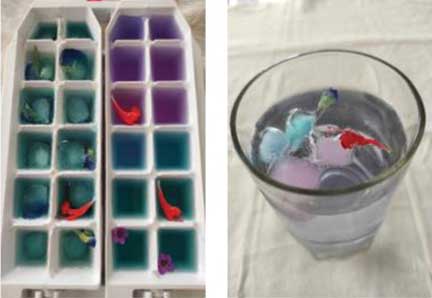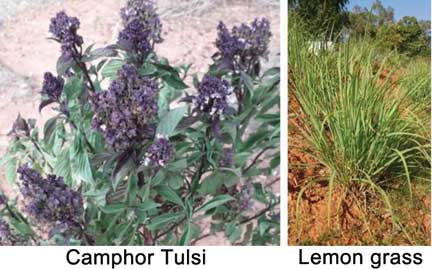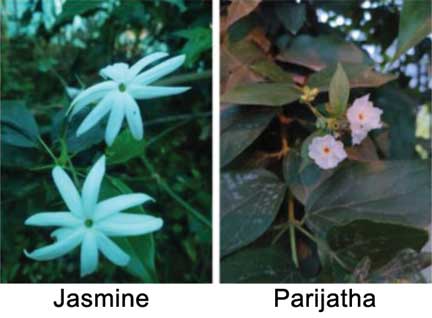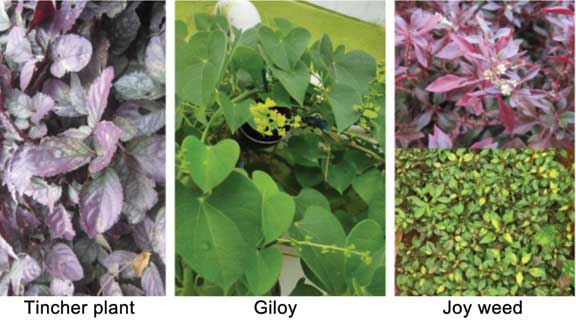Nandini D
Everyone wishes to be happy and healthy. Gardening is a simple way of achieving both health and happiness. It can be taken up by anyone at any age. Gardening enhances awareness of one’s surroundings, improves cognitive skills and provides an opportunity to appreciate nature, especially since most of us live in urban jungles. While eco-clubs and nutrition gardens are slowly making their way into schools, many are still unaware of the benefits of gardening. Therefore, Teacher Plus brings you a monthly column on gardening. Articles in this column will provide information about common plants and their use in daily life. Each article will focus on a set of activities and provide a broader scope for further learning.
It was Saturday afternoon. I opened my study window to see what all the noise was about. Vivan and his friends were talking loudly. When they saw me at the window, Vivan called out, “Aunty, can you make juice for us? You told the other day that you can give us fresh juice.”
“Most certainly.” I opened the door to welcome the children in.
“Come inside. Let us see some magic.”
“Magic? What magic, aunty?” The children looked at me surprised.
“Shilpa collect some blue flowers from the butterfly pea plant and I will show you.”
I kept some water for heating and arranged two transparent glasses on the table. I asked Shilpa to drop the flowers she collected into the boiling water. Then I allowed the water to cool for a few minutes and sieved the water into the glasses. “Oh!” Anand squealed, “It’s blue water now.”
“Yes dear, to see the magic, now we will add a few drops of lemon juice.” As I squeezed some lemon juice into the blue liquid, it started turning purple. “This is beautiful!” Vivan and Shilpa screamed.
“Wait dear, now we will add a spoon of jaggery and mix it so that you can drink the juice.”
As I added the jaggery, the juice turned light brown.
“Yes, it is magic, aunty. Now which colour juice I can drink?” asked Shilpa.
Children, you can choose whichever colour juice you wish. As everyone wished to taste all the three, I poured a little of each colour juice into everyone’s cups. Vivan said, “One day I will also make this colour juice to show magic at home. It tastes and smells different. What is the use of drinking this juice?
“It reduces fatigue, body pain and swelling caused by wounds.”

“Now for another trick. Look at these coloured cubes.”
“Yes! It’s beautiful. The colour cube got a red flower also! How did you do it aunty?”
“I saved a little juice and poured it in an ice tray. I added a few salvias, oxalis flowers and butterfly pea plant flower petals. The ice cube preserved the flowers.”

Shilpa asked, “If I wish to add few more plants to my aroma garden, which plants I can grow?”
“You can grow, camphor tulsi (Ocimum bascsilicum) and lemon grass (Cymbopogon citratus). Once it grows, you can soak the camphor tulsi seeds in water to drink. Its leaves, you can dry and keep in sachets between clothes as insect repellent. Lemon grass leaf blades you can cut into small pieces and add to boiling water. Inhale the fragrance while having tea, you will feel relaxed.”

“If you have the space for climbers, you can choose jasmine. It flowers profusely and is extremely fragrant. You can make the plant grow vertically or horizontally as you desire. Similarly, you can grow parijatha (Nyctanthus arbor-tristis) in front of your house.”

“Great aunty, my mom will like this idea. She can wear jasmine flowers in her hair.”
Vivan joined the conversation. “I know the story of the parijatha flower. It was in Lord Indra’s garden. It is considered as the wish fulfilment plant.”
“Very good Vivan. Now can you think of another plant known for its fragrance, mentioned in the Mahabharatha?”
The children looked at each other. Anand said, “I know, some flower Bhima goes in search of, but I am not getting the name.”
“Ok, you find out and tell me the next time.”
Shilpa said,“I know how to grow tulsi. What about lemon grass?”
“Look here, I am giving you some grass with roots, you can plant it in a pot. It will multiply. When, it grows and spreads, you can separate and plant again to multiply.”
As the doorbell rang, Anand jumped to open the door. Rina was at the door looking for her friends. I offered her juice. After sipping a little juice, she said, “Aunty I too like to grow plants. I heard, Vivan, Anand and Shilpa have their own theme garden. I wish to have a different theme! Can you suggest?”
“Why not, you can choose ‘chroma’ garden or self-help garden”
“What are these gardens? I never heard aunty.”
“Chroma garden will have plants or flowers of specific shades only. In the self-help garden, you can grow plants for your primary health care.”
“I wish I can make all types of gardens, but there is not enough space, what to do?”
“Do not worry, there are plants that fall into more than one category. For example, tulsi will give you aroma, and help cure cold and cough related ailments. Coleus can also be used similarly. Malabar spinach helps cure mouth ulcer. You can also use it to make soup or dal. Amaranthus is a tasty vegetable rich in vitamins and minerals.”
Shilpa said, “I know, coriander leaves give that special taste to rasam and salad. Amma adds them to buttermilk also.”
Rina asked, “To make chroma garden, which plants I must grow?”
“Joy weed (Alternanthera sessilis), tincher plant (Hemigraphis colorata), giloy (Tinospora cordifolia).”
You get joy weed in two colours, red and green. Tincher plant is violet. Both plants spread and cover the soil. You can grow these plants in shallow pots or trays. Giloy is a climber you can allow it to grow along the balcony railing.”

“Wow! How these plants help us?”
“The colours influence the emotions of a person. If you keep watching green colour, you feel relaxed. Red rejuvenates the body and mind. Purple offers a sense of tranquillity. White promotes healing. That is why people go to parks, to relax.”
“Do they flower or fruit? Can we pluck to eat?” Anand asked
“You can pluck joy weed leaves and use them for cooking like any other leafy vegetable. If you apply the juice of tincher plant on a wound, it will hasten healing. Giloy is best to fight diseases. You can ask your mom to make a decoction out of it and drink it regularly to boost the immune system.”
Rina asked, “How about tall plants? Already I have one red hibiscus at home. It gives lot of flowers.”
“Ok, come here, see you can plant red, pink, white hibiscus. I can give you cuttings. Shilpa will show you how to plant.”
“Great idea aunty. I know my mom washes her hair with Shikakai mixed with hibiscus leaf powder.”
“Rina, when it flowers, you can ask your mom to make, hibiscus flower tea!”
“But my grandpa plucks all flowers for his daily puja, so I may not get flowers to make tea aunty.”
“No worries, Rina, ask your grandpa to leave a few flowers on the plant, to see and enjoy. You can also ask him not to discard the dried flowers every day and store them in a dry polythene cover or glass bottle. Take out dried flowers to make tea or juice, whenever you wish.”
Rina replied, “Yes, it is possible. I will arrange for the pots and come to you for planting material aunty.”
“Sure children. Come again when you are ready to plant. Bye.
Find the answers!
- Why does butterfly pea plant flower juice turn purple from blue when lemon juice is added? And then brown on adding jaggery?
- What is the name of the fragrant flower mentioned in the Mahabharata?
References
- Ganesh Babu and Nandini D 2016, I love my Herbal Garden, FRLHT, Bengaluru
- Nandini D 2018, Sustainable Utilization of Medicinal plants – Biodiversity Garden. Training Compendium. Indian Institute of Horticultural Research, Bangalore
- Nandini D 2018, Value addition & marketing of NTFP: Medicinal plants, Training Compendium, Institute of Wood Science and Technology, Bangalore
- https://www.ncbi.nlm.nih.gov/pmc/articles/PMC1297510/
- https://commons.wikimedia.org/wiki/File:Krishna_and_Satyabhama_steal_Indra%27s_Parijata_tree.jpg
The author is a botanist. She has been involved in teaching and research for more than 25 years. Currently she is working as a Consultant for We Care Society (WCS), Bengaluru and is Visiting faculty RIWATCH, Roing, Arunachal Pradesh. She can be reached at nandinidholepat@gamil.com.
